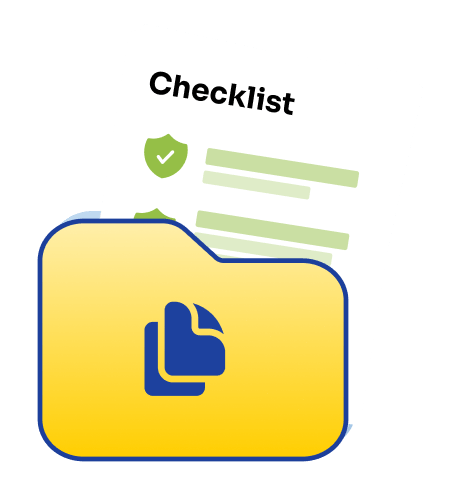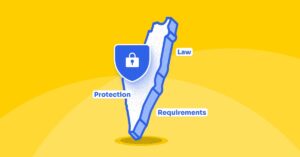Introduction
Explanation of data protection audits
Data protection audits are assessments performed to evaluate an organization’s compliance with relevant data protection laws and regulations, such as the General Data Protection Regulation (GDPR). A data protection audit aims to identify gaps in an organization’s data protection measures, ensure that personal data is processed in a lawful and secure manner, and prevent data breaches and other security incidents.
Importance of preparing for audits
Preparing for data protection audits is crucial for organizations as it helps them to demonstrate their compliance with relevant data protection laws and regulations, maintain the trust of data subjects, and avoid any potential legal penalties and reputational damage that may result from non-compliance.
Compliance checklist for preparing for data protection audits
- Conduct a data inventory
- Establish legal basis
- Create Privacy Policies
- Implement data subject rights
- Train staff
- Conduct risk assessments
- Implement technical and organizational measures
- Monitor compliance
- Prepare for audits
- Respond to audit findings
Understanding the Legal Requirements
Overview of data protection laws
The GDPR is a regulation introduced by the European Union (EU) that applies to organizations that process the personal data of EU citizens. The regulation sets out the rights of data subjects, the responsibilities of data controllers and processors, and the standards for processing personal data.
In addition to the GDPR, other data protection laws and regulations may apply to an organization, depending on the location of its operations and the nature of its data processing activities. Organizations should be aware of the specific data protection laws and regulations that apply to them and ensure that their data protection measures are in line with these requirements.
Understanding the role of data controllers and processors
Under the GDPR, data controllers are responsible for determining the purposes and means of processing personal data. In contrast, data processors are responsible for processing personal data on behalf of the data controller. Organizations should have precise arrangements in place for the roles and responsibilities of data controllers and processors and ensure that they are fulfilling their obligations.
Developing a data protection policy
Explanation of the need for a data protection policy
A data protection policy is a document that outlines an organization’s approach to protecting personal data. The policy should be developed in line with relevant data protection laws and regulations and should be communicated to all employees and stakeholders.
Components of a data protection policy
A data protection policy should include the following key components:
Purpose of processing personal data
Data protection principles
Lawful basis for processing personal data
Data minimization
Data security measures
Record-keeping and documentation
Data subject rights and how they can be exercised
Data breach response plan

Implementation and communication of the policy
Once a data protection policy has been developed, it should be communicated to all employees and stakeholders. Organizations should also provide training to employees on their responsibilities under the policy and ensure that the policy is regularly reviewed and updated as necessary.
Conducting a Data Protection Impact Assessment (DPIA)
Explanation of Data Protection Impact Assessments (DPIAs) is a crucial part of complying with data protection laws, including the General Data Protection Regulation (GDPR). A DPIA assesses the potential impact a particular data processing activity may have on the privacy of individuals whose data is being processed. DPIAs identify and mitigate privacy risks early in the development process and ensure that the privacy of individuals is protected.
Five steps involved in conducting a DPIA
Conducting a Data Protection Impact Assessment involves the following steps:
Identify the purpose and scope of the data processing activity.
Identify and assess the privacy risks associated with the data processing activity.
Determine if there are any existing solutions that can mitigate privacy risks.
If necessary, implement measures to reduce privacy risks.
Continuously monitor the privacy risks and update the DPIA as necessary.
Record-keeping and documentation
It is vital to keep a record of the DPIA and any updates made. This will demonstrate the organization’s commitment to data protection and help ensure that individuals’ privacy is protected. The records should include the purpose and scope of the data processing activity, the privacy risks identified, the measures taken to mitigate those risks, and a description of the ongoing monitoring process.
It is recommended to conduct a DPIA at the beginning of a new data processing activity and whenever there is a change to the activity that may have an impact on privacy. This will help to ensure that the privacy of individuals is protected and that the organization remains compliant with data protection laws.
Ensuring data security
Explanation of data security measures
Data security measures are critical to protecting personal data and ensuring compliance with data protection laws. Data security measures help to protect against unauthorized access, unauthorized disclosure, and other forms of data breaches.
Implementing appropriate measures
To ensure data security, organizations should implement appropriate technical and organizational measures. These measures may include:
Encrypting sensitive data
Implementing firewalls and other security technologies to protect against unauthorized access
Providing secure passwords and two-factor authentication for user accounts
Conducting regular security audits to identify and address vulnerabilities
Implementing physical security measures to protect against theft or loss of data storage devices
Incident Response Plan
In the event of a data breach, organizations should have an incident response plan in place. The incident response plan should include procedures for quickly identifying and responding to a violation, as well as procedures for notifying affected individuals and the relevant authorities. A well-prepared incident response plan can help minimize the damage caused by a breach and demonstrate the organization’s commitment to data protection.
Providing employee training
Explanation of the need for employee training
The employees of a company are often the ones who handle sensitive personal data and are the first line of defense against a data breach. Therefore, they must be well-informed about the data protection policies and procedures and how to handle sensitive information. Employee training helps to ensure that all employees understand their role in protecting personal data and are equipped with the knowledge and skills to do so.
Training content and methods
Employee training should cover the following topics:
An overview of the data protection laws, including the General Data Protection Regulation (GDPR)
The organization’s data protection policy and procedures
The types of personal data that the organization processes and how to handle it securely
The potential consequences of a data breach, both for the organization and for affected individuals
The importance of reporting a suspected data breach
The role of the data protection officer (DPO)

Documentation of training
It is essential to keep a record of who has received training and when. This will demonstrate the organization’s commitment to data protection and help to ensure that all employees are trained on the latest data protection policies and procedures. Training records should include the date of the training, the topics covered, and the names of the employees who participated in the training.
Documentation and record-keeping
Explanation of the need for proper documentation
Proper documentation and record-keeping are essential for ensuring the organization’s compliance with data protection laws such as the GDPR. Records and documents must be kept for a minimum period, as specified by the GDPR and other data protection laws. The documentation will provide evidence of the steps taken by the organization to ensure data protection, which can be used to demonstrate compliance during data protection audits.
Types of records and documents to be kept
The organization must keep the following records and documents:
Data protection policies and procedures.
Data protection impact assessment (DPIA).
Employee training records.
Records of data breaches and incidents.
Contracts and agreements with data processors.
Documentation of the security measures implemented to protect personal data.
Importance of accurate and timely record-keeping
Accurate and timely record-keeping is important for several reasons:
It provides evidence of the steps taken by the organization to ensure data protection and can be used to demonstrate compliance during data protection audits.
It helps identify trends and patterns in data protection incidents and breaches, which can inform future improvements to the organization’s data protection measures.
It helps ensure that the organization meets its legal obligations under data protection laws such as the GDPR, which require organizations to keep records of their data protection activities.
Conclusion
Preparing for data protection audits is crucial for organizations to demonstrate compliance with data protection laws. By understanding the legal requirements, developing a data protection policy, conducting data protection impact assessments, ensuring data security, providing employee training, and maintaining proper documentation and record-keeping, organizations can minimize their risk of data breaches and ensure the protection of personal data. Preparing for data protection audits helps organizations ensure they are compliant with data protection laws and minimize their risk of data breaches. This helps to build trust with customers and stakeholders and maintain the organization’s reputation.
Compliance with GDPR and other data protection laws is a legal obligation and a necessity in today’s data-driven world. Organizations must continuously assess their data protection measures and ensure they follow the latest guidelines and requirements. Staying up-to-date with the latest developments in data protection and investing in the necessary resources to maintain compliance is essential for organizations to achieve their data protection goals.




